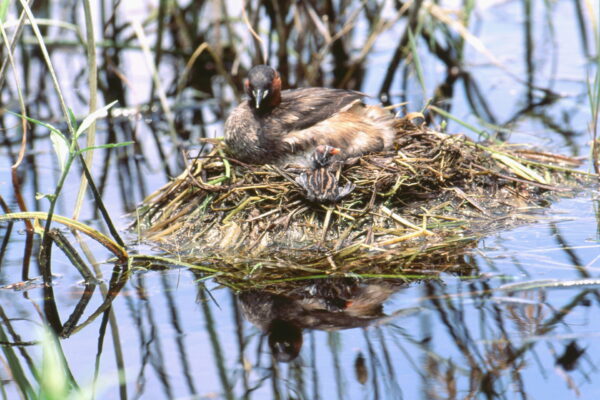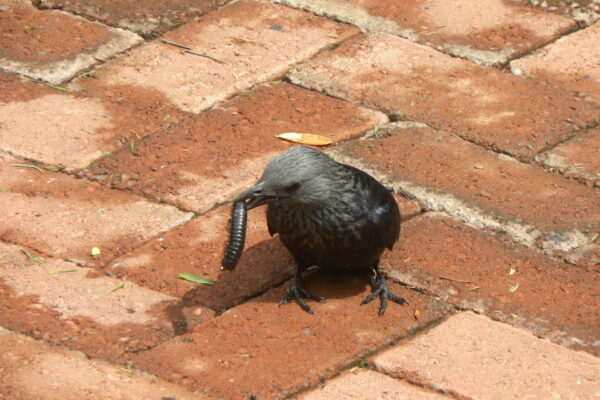Breeding is in full swing. There was never a moment without a cuckoo – Klaas’s, Red-chested or Black – calling full bore. Swee Waxbills – only males apparently – were collecting bits of dry grass and fallen pine needles, obviously nest-building materials. Perhaps the females were at home arranging things?
The Little Grebes were a step ahead, with a nest near the middle of Charlesworth Dam. It consists of an untidy pile of water-side weeds, apparently floating, but it must be anchored to the bottom, otherwise it could be blown to the bank within the reach of predators. One parent stayed permanently on the nest with one black-and-white striped chick. The other parent foraged around, bringing regular titbits to the nest.
Other celebrities at the pond were the Malachite and Half-collared Kingfishers together; very satisfying to compare them.
An African Harrier-Hawk got the full treatment from a Fork-tailed Drongo. Drongos “hate” all raptors, and being more agile can bully them at will. This drongo kept clawing the back of its victim, and the only escape it had was to circle higher and higher until virtually out of sight.
Often found on paved areas are fragments of large millipedes. As always Red-winged Starlings are responsible. Millipedes exude a toxic chemical when molested, but this does not deter the starlings. They whack the victim on the ground, gradually breaking it into bite-sized morsels.
The best sighting, and a new “tick” for all the visitors, was of two Yellow-throated Woodland-Warblers foraging for several minutes, right in front of us. It’s not a particular rarity, nor an endemic, but is elusive, and difficult to find in dense foliage.


